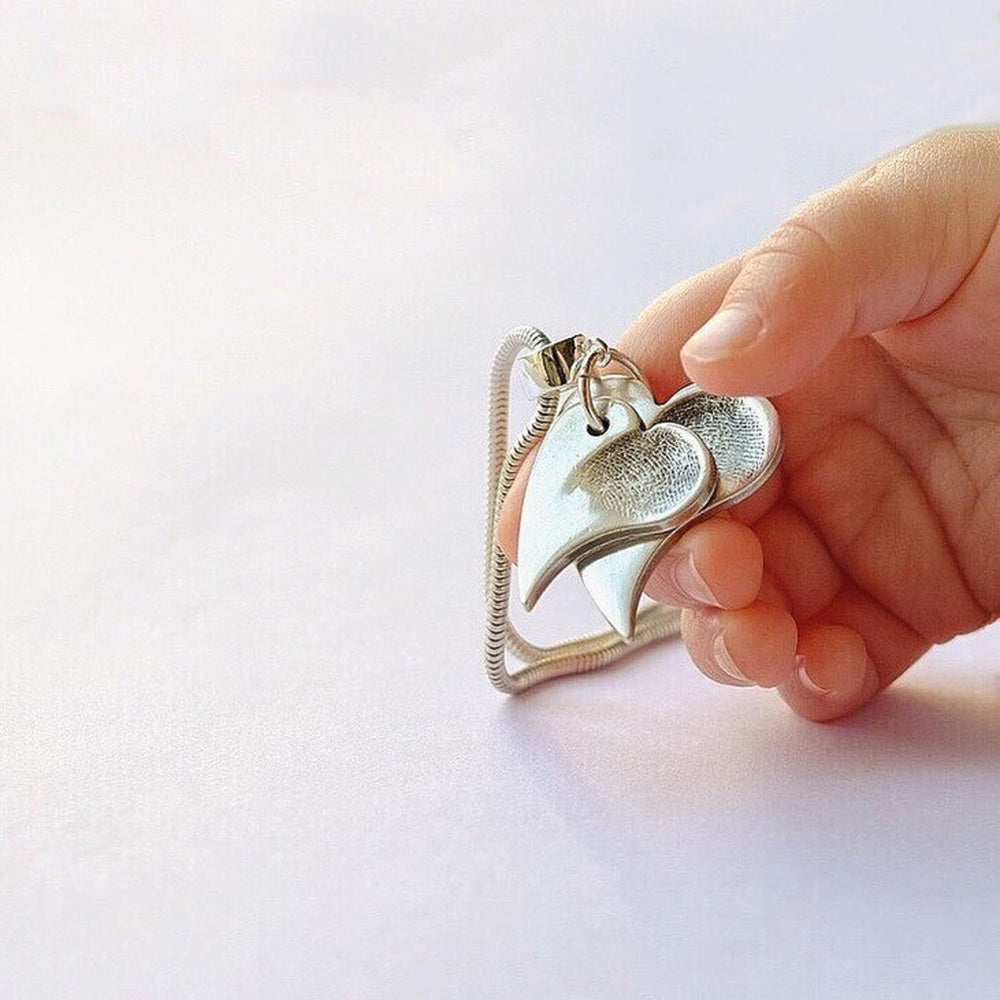
My personal learning journey into fingerprint jewellery making has caused tears, tantrums and lots of joy.
I have found myself answering many fingerprint jewellery questions.. in my quest to become a professional fingerprint jewellery company.
Six years on and I have a much more balanced time of fingerprint jewellery making, thankfully. One day soon I will tell you 'my, how I started ' story but thats for another time.
I started my business to create newborn fingerprint jewellery, hence, my name Little Fingers 'n' Toes and have been surprised where my business has taken me. My two kiddies were very young in those early days and I was researching how to make fingerprint jewellery large proportion of my work is bereavement fingerprint jewellery.
Have you ever heard of the 10,000 hours rule? It is an interesting idea that suggests it takes 10,000 hours of practice to master something, but I think it varies from person to person and depends on the level of skill and other factors.
Some believe that if you learn from mistakes and aren’t afraid to make mistakes in the first place, you’ll go from good to great.
Now I have always been a creative soul and I have made lots of mistakes but I have fun and if you have fun, you’ll learn to love it, and THAT’S when it clicks.
If you love something, you’ll want to do it all the time. Most of the time I find myself working very late at night and often, jumping out of bed in the morning, wanting to make fingerprint jewellery before anything else.

I have discovered some weird and funny things about the precious metals we use to make fingerprint jewellery and here are my top 5-
-
Get the right firing temperature, or else!
-
The greenware state needs kid gloves
-
Open the window, its smelly in here
-
Powdered gold is my best friend
-
Softly silver does it
1. Silver is very picky about its cooking temperature, get it right, or else!
Imagine a baby pressing his cute little chubby fingerprint into a pre-fired silver heart. An hour spent delicately sanding the edges so they are perfectly smooth. Sanding away teeny-weeny air bubbles and blemishes so that it is flawless and ready to be cooked in the kiln. Setting the temperature at 970 degrees and then oops.... too hot, the beautiful fingerprint heart jewellery has melted into big bubbling blobs at the bottom of the kiln, doh! Start again..

2. The greenware state needs kid gloves
When silver dehydrates and all the water has evaporated, before it has been cooked in the kiln, it is called the greenware state. The best way to describe a piece of jewellery in this state is like working with a fragile rich-tea biscuit.
When all the edges are very carefully sanded smooth and the piece is blemish free, we use a hand-drill to create the hole for the jump ring, seriously nerve-racking!!

3. Open the window, its smelly in here
Some of the chemicals we use can be really offensive! One in particular is called liver of sulphur. This is used after firing the jewellery in the kiln to give an oxidised or darkened effect to the piece, perfect for highlighting texture or patterns, for example ideal for fingerprint jewellery. One thing is for sure: liver of sulphur smells like rotten eggs. Don’t worry though — the end results are worth the stink. You can't smell it on the finished jewellery, I promise.

4. Powdered gold is my best friend
5. Softly silver does it
Beautiful personalised silver jewellery looks very different at the beginning, when straight out of the air-tight packet. I find myself telling my families to 'trust me' and thankfully they do.
It is very soft and looks and feels much like sculpting or porcelain clay. What makes it so fantastic is that it consists of extremely fine particles of sterling silver, almost like dust, mixed up with a non-toxic organic binder. The binder burns out during firing in the kiln, leaving you with a solid sterling silver jewellery piece afterwards. This explains the shrinkage of between 10-15%.
There are plenty more weird and funny things, some I could share here in another blog and some I'm still learning about.
10,000 hours is approximately 417 days. If you devote 3 hours per day it would be approximately 3333 days or a little over 9 years!





Leave a comment
Also in From the Studio
Unlock the Power of Personalised Jewellery
October 30, 2023
Continue reading
Capturing the Perfect Baby Handprint: What You Need to Know
May 20, 2022
Continue reading
Long Way to Finding Fingerprint Jewellery
October 22, 2021
My experience in finding fingerprint jewellery wasn't smooth! Years in corporate business changed dramatically when I had children in 2014. Returning from maternity leave was a shock.
Continue reading